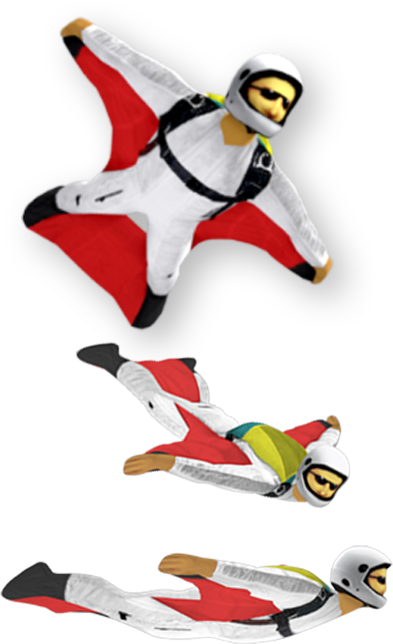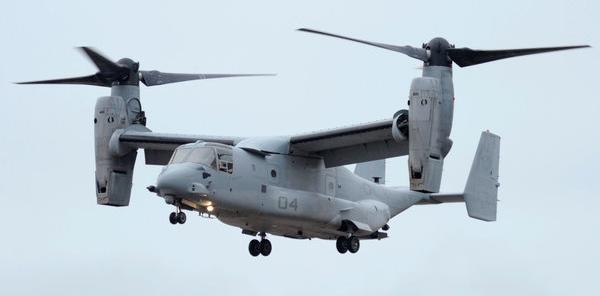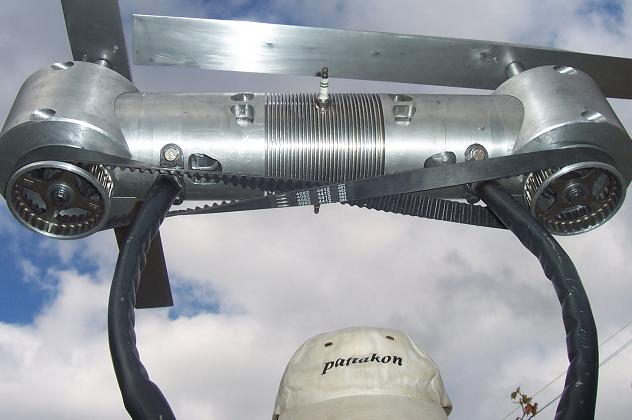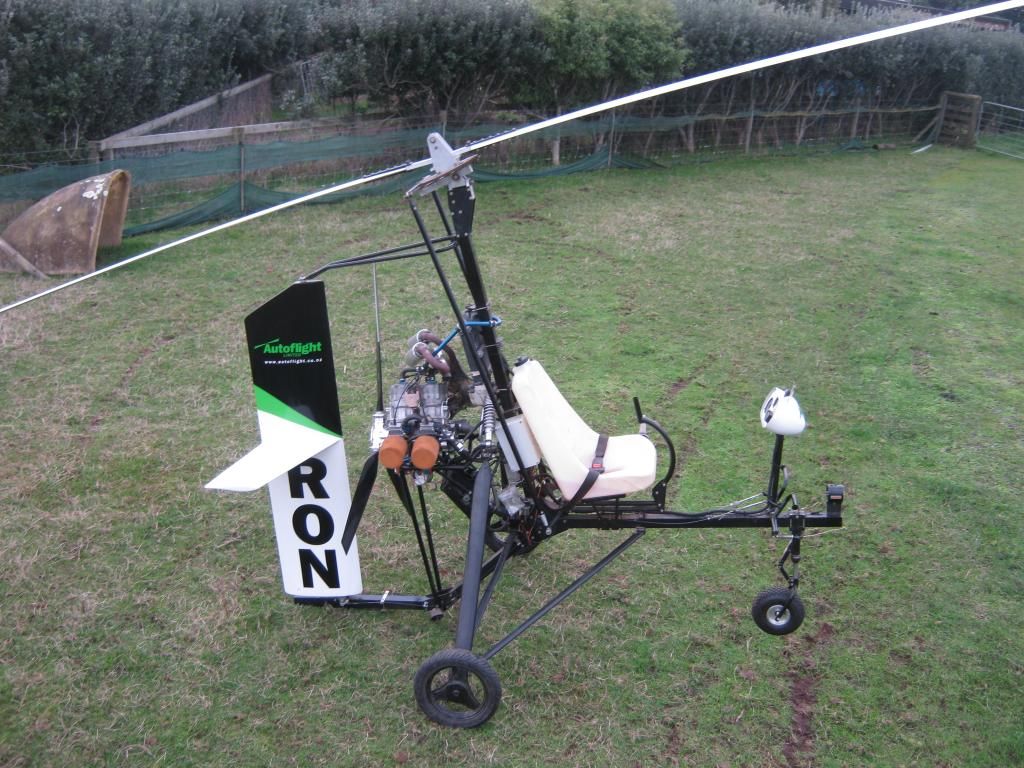Hello Uniflow.
What are the specifications of your mini-gyroplane? Like weight, engine, rotors diameter, top speed, required road length for take-off / landing, etc.
I wrote that the PatATi Portable Flyer is radically different than your gyroplane.
Let me write a few more differences than those already mentioned.
Think you are flying horizontally wearing a wingsuit and having the PatATi Portable Flyer secured on your shoulders.
You lie on the air as on a carpet.
Your front surface area is small, much smaller than when you ride a motorcycle or when you seat in a gyroplane.

Besides the small frontal area, it is also the wingsuit that helps by reducing the coefficient of aerodynamic resistance.
At small speeds, say below 160Km/h (100mph) you keep your legs / arms extended to achieve the maximum aerodynamic lift.
At higher speeds you retract, as necessary, your legs / arms (the aerodynamic lift is more than required). This reduces the aerodynamic resistance and increases the top speed.
With 70bhp a motorcycle can go to 150mph (240Km/h), despite the big frontal area, the weight, the rolling friction, the ground effect etc.
You write:
“I talk to Glen Martin ( jetpack ) from time to time, their craft seems to have got bigger and seems to me to be more like a small aircraft now.”
We tried to communicate with Glen Martin a few times, but he is not responding.
Let’s make a comparison of Martin Jet Pack with the PatATi Portable Flyer:
MartinJetPack:
a pair or ducted fans of 520mm diameter each,
a 2,000cc, 200 bhp engine,
a maximum take-off weight of 330Kp,
a fuel capacity of 45 lt,
a range of 30Km,
a maximum airspeed of 74Km/h,
a cruise speed of 56Km/h,
electronic flight control (Electronic Control Unit, flaps, servomotors etc),
a cost more than US150,000$.

PatATi Portable Flyer (estimation):
a pair of counter-rotating propellers of 1m diameter each,
an 800cc PatATi Opposed Piston engine,
a take-off weight of 100Kp (including the pilot and the fuel),
a range of 300Km,
a maximum speed above 200Km/h,
manual control (the body of the pilot is: the vehicle and the sensors and the control unit and the servomechanisms and the landing system, just like the bodies of the birds, bats and bugs).
Disk loading (weight to propeller disk area at take-off):
MartinJetPack: 330Kp/0.43m2 = 776Kp/m2
PatATi Portable Flyer: 100Kp/1.57m2 = 63.7Kp/m2 (a dozen times smaller).
As in a small helicopter or airplane or gyroplane, the pilot of the Martin JetPack is a “dead” mass secured to the flying machine. The flying machine is the big percentage of the total mass.
However the lightweight is more than significant for a Portable Flyer.
Think of the case wherein the static thrust from the two propellers of the Portable Flyer is only 85Kp (187lb) while the total weight is 100Kp (220lb).
You cannot take off, but you can have a lot of fun (and chance for training before the real soaring).
The pilot feels like weighing only 15Kp (33lb).
He can jump several meters in height and then land safely on his legs.
He can run fast.
He can pass from road-less areas.
He can climb easily on wild mountains jumping from rock to rock.
He has his legs, why not to use them? Isn’t it the best landing gear?
The architecture of the JetPack of Martin is oriented to hovering.
A car with the engine of Martin JetPack (200bhp) can run on an open road with some 240Km/h (150mph), while the JetPack with the same engine has a maximum speed of 74Km/h (46mph), i.e. as fast as a quarter horse.
The architecture of Martin JetPack is also responsible for the high fuel consumption (small mileage) and the small range (30Km, less than 20 miles).
What causes so poor performance? It is the principle which is wrong. It combines the disadvantages, the drawbacks, of helicopters and airplanes.
The Osprey V22 is based on the right principle: it combines most of the advantages of helicopters and of the airplanes: it is a helicopter at take-off and landing (which is a tiny percentage of the whole flight time) and then flies as a fast, fuel efficient airplane (the almost double maximum speed than the Chinook, and the more than double range than Chinook say it all).


The Portable Flyer can be seen as a scaled-down Osprey V22, an Osprey wherein many things have been eliminated (manual instead of electronic control, no landing system, no fuselage etc).
The human body has inherent (inborn) capabilities to perform most of the functions of a bird except the power for take-off and soar.
Quote from
http://www.pattakon.com/pattakonFly.htm
“What a man needs, in order to fly, is neither a vehicle, nor sensors, nor servomechanisms, nor control units, nor transmission shafts, nor differentials, nor gear-boxes, not even a seat.
What a man does need, in order to fly, is power provided in a true neutral and manageable way.”
i.e. a couple of wings or a couple of powered propellers
Thanks
Manolis Pattakos








